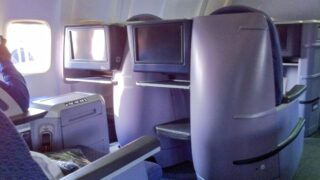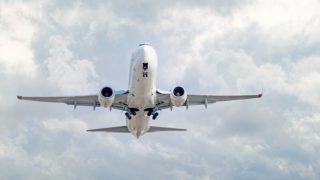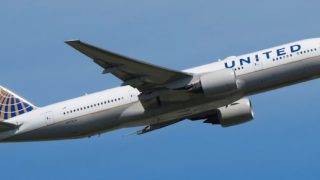It’s worth noting that the same United route between Denver and Lihue had two flight diversions in just over a month due to hydraulic system failure. Both events raise concerns about the reliability of United’s aging Boeing 757-200 fleet.
The latest diversion happened on Thursday, October 2. United Airlines flight UA2307, a 26-year-old Boeing 757-200 bound for Lihue, Hawaii, was forced to return to Denver shortly after takeoff due to issues including a hydraulic system failure. In August 2024, another United Boeing 757-200 bound for Denver from Kauai diverted in the other direction on the same route for the same problem.
United Airlines wants to retire its aging Boeing 757 fleet.
The transition to newer, more fuel-efficient aircraft, like the Airbus A321XLR, is expected to begin with deliveries starting in about a year. This marks the beginning of the end for the 757, a plane that Beat of Hawaii editors Rob and Jeff have been flying to and from Hawaii for nearly 30 years. The 757’s age has raised reliability concerns on long-haul routes, including these recent diversions.
The aircraft involved in the recent incident, registration N12125, is part of United Airlines’ aging Boeing 757-200 fleet. Delivered in 1998, the plane has been in service for over a quarter century.
This particular Boeing 757 has been involved in other recent incidents, including a serious event while en route from Newark to San Francisco, which injured two passengers. That was due to a Traffic Collision Avoidance System (TCAS) issue related to a warning designed to help prevent mid-air collisions. Additionally, the aircraft sustained a tailstrike several years ago.
October 2 UAL diversion from Denver to Kauai.
The aircraft departed two hours late from Denver International Airport and had climbed to about 28,000 feet when the crew identified multiple technical issues, including an autopilot malfunction. As a result, the decision was made to return to Denver, where the plane landed safely on runway 34R just 40 minutes after departure.
This incident hits close to home for Beat of Hawaii editors Rob and Jeff, who have frequently flown this exact route to and from Lihue. As seasoned Hawaii travelers, they understand firsthand the concerns passengers may have when flying long distances over the Pacific, making this story all the more personally impactful.
A passenger onboard the flight reported that the captain informed them of a hydraulic failure and other system malfunctions, which led to the diversion.
Hydraulic failures on Hawaii flights.
Hydraulic systems are critical to an aircraft’s operation, as they control essential functions, including landing gear, brakes, and flight control surfaces. When these systems fail, pilots may lose some control of the aircraft, leading to a decision to divert. In this case, the failure was significant enough that it also appeared to have impacted the autopilot, increasing the need for an immediate return.
Had the aircraft continued its journey to Lihue, it would have been flying over the Pacific Ocean, with few options for emergency landing. Returning to Denver ensured the safety of passengers and crew.
Other recent Hawaii flight diversions.
This is not the first time a United Airlines flight to Hawaii has faced recent technical difficulties mid-flight. In August 2024, another flight diverted in the other direction on the same route and experienced a hydraulic failure, forcing the flight to land in Honolulu for repairs. These incidents are not uncommon on long-haul routes to Hawaii, especially when flying older aircraft. As aviation professionals will quickly point out, these are not necessarily concerning for them, although they certainly are for us passengers.
In another example, earlier this year, double-whammy incidents occurred mid-Pacific on two flights, involving both a depressurization event and a tailstrike. These events highlight the potential risks of long-distance travel over some of the longest spans of open ocean and the importance of aircraft maintenance and excellent crew decision-making during in-flight emergencies.
Safety comes first while aging aircraft raise concerns.
While no injuries were reported in the latest incident, and the United Airlines crew safely landed the aircraft, this incident raises broader concerns about the reliability of significantly aged fleets. As United Airlines continues to modernize its planes, the focus remains on ensuring passenger safety and flight reliability, especially on long-haul flights to Hawaii.
Hydraulic failures are serious, and when they occur on flights to remote destinations like Hawaii, they highlight the importance of maintaining robust safety protocols. While travelers should always be prepared for unexpected disruptions like this, these diversions are handled with the utmost care thanks to skilled flight crews.
We welcome your input!
Get Breaking Hawaii Travel News







( 757 has 3 hydronic systems): That’s why we almost never see an accident. SOP for transport aircraft. Press that writes about this as an issue are ignorant. They equate safety to convenience allll the time. Wish they would grow up and understand that airplanes have failures (new and old). Period. The goal is to always land and fix the problem. Whether it’s inter-island or ETOPS. Very smart people have already set this up. Quit second guessing them.
I think many airlines cut maintenance during covid and have never caught up. Great local maintenance is a key issue
D_D: I agree. Seen it myself. But it has to extend to every person that touches the A/C. They all must practice safety culture 100% of the time and report anyone that refuses to do the same. In the cockpit, CRM must be used if there’s a problem. Great fighter pilots sometimes don’t make good transport pilots.
Hey Jimbo-O … you said: “Great fighter pilots sometimes don’t make good transport pilots.”
And that is quite correct … sometimes. (smiles). But I know a couple that did — Hey !!! Are You Lookin’ At Me !!! (smiles once again)
From this piece: “Two Hydraulic Diversions In One Month, Same United Hawaii Route” ….
And some might think that’s an “issue” … ??
I suspect you’ve never worked and maintained aircraft (as a mechanic) nor flown them (as a pilot or crewmember) in the industry … it happens. It’s “normal”, but not “nice”.
It’s also referred to as “business as usual”. This spoken from the 20/20 hindsight gleaned from >30K flight hours in the USN and commercial airlines — and a lot of that was in/out of the “Territory of Hawai’i” …
But if you want to discuss old aircraft ($$$$) and declining standards across the airline industry … I’m with you 100%.
I’m surprised that they are having this much problems with the 757s even as aged as they are. Especially since ETOPS protocol comes into play.
UA needs to step up their inspections of their aging aircraft. I cannot believe they still operate these aircraft over water where expensive and inconvienence factors still lurk after several years.
I remember when a UA 757 engine caught fire from DEN-LIH causing yet another return to Denver. Passengers were very lucky that shrapnel did not pierce the fuselage. Also, residents were not injured when parts fell to the ground.
The age of the aircraft is immaterial from a safety standpoint. Older aircraft are maintained using strict rules just like newer ones are. The rules are determined by the airframe and the FAA and updated whenever necessary. Redundancy is always included in the go/no-go decision and that too is based on strict rules. Your article is pointing out that you were inconvenienced. There was never an unsafe situation that anyone was exposed to. This is not like you driving a 30 year old car. In most cases. A 30 year old airplane operated per the FAA’s regulations by a major western nation airline will have just as good (or better) service history as a brand new one. The two fatal 737 Max accidents are a great example. Go read about them in detail if you don’t understand me. You’ll see things unrelated to the aircraft type or age that happened that will curl your hair and would never happen at UAL.
I’ve trained a LOT of “foreign pilots” while in “The Show” (airlines) and splitting my time between Line flying and instructing in the Training Dept.
What you say is basically right on. There’s pilots and then there’s “pilots” … and some of those “pilots” should never (underline that) be allowed anywhere near an airline cockpit.
When it comes to foreign airlines and their staffing?? In my experience, it frequently came down to family, privilege, money, and who-you-know … and I’ve been advised by my USA management on more than one occasion to “not give a flight down” to foreign pilots trainees. Think: $$$$$ and training contracts.
Score keeping aircraft maintenance issues on Hawaii serves no purpose. Aircraft are complex machines, and critical systems have redundancies built in for safety, sometimes multiple redundancies. As mentioned in this space many times before, because of the long distance travelled over water to Hawaii, options are limited in case of mechanical issues. Over the mainland, with multiple options for emergency landings, “wait and see” is a more common option. These are non-stories.
I asked a retired United pilot about the hydraulic failure on the August 2024 Kauai-Denver flight and why it diverted since there are four hydraulic systems on this aircraft. He said that it is a requirement that aircraft with a hydraulic failure not continue the flight, and if they did, the FAA would have “hung United out to dry”. I have flown this route myself many times and never experienced a problem, loving the “faux-laris” treatment in the forward cabin of the 757. However, the recent 757 events on this and other long haul routes may force United to expedite its transition to the A321XLR, if possible.
I worked avionics on 757 they only have 3 hydraulic systems. They are a very reliable airplane
You, Sir are quite correct … 3 independent hydraulic systems on the B-757 …